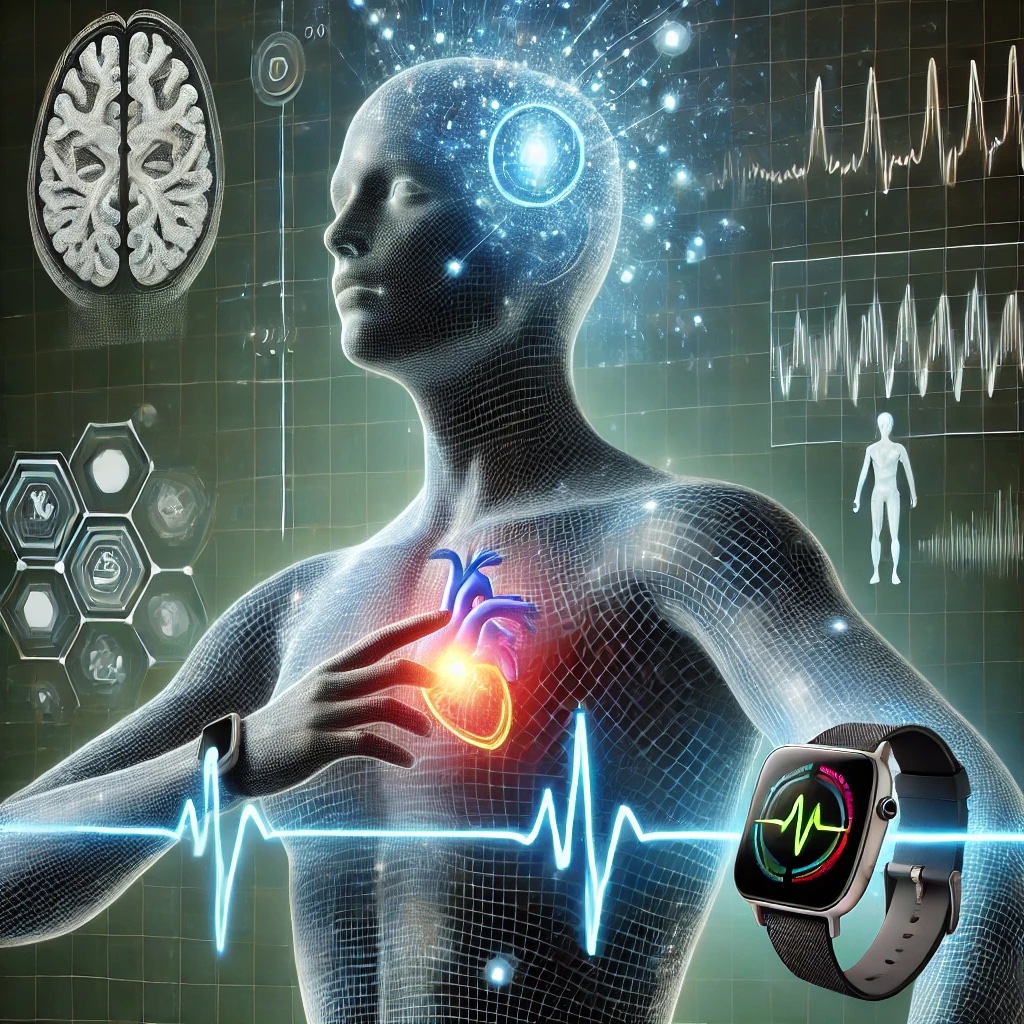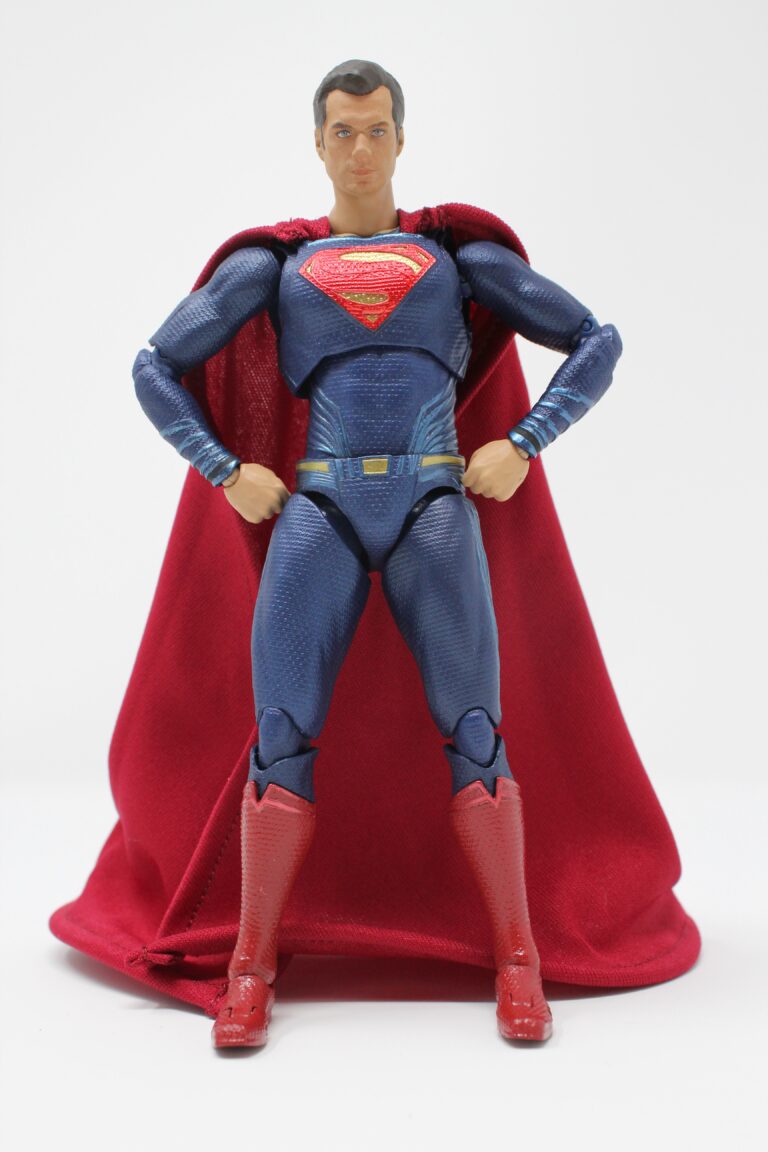Wearables: Strengthening the Mind-Body Connection Through Interoception
What if you could see what your body was trying to tell you—before you even felt it? Wearable technology is more than just a fitness trend; it’s a tool for strengthening the mind-body connection and unlocking deeper self-awareness. By tracking real-time health data, wearables empower us to listen to our bodies, recognize subtle signals, and take control of our well-being.

The New Frontier of Self-Empowerment
As a kid, I loved Saturday morning cartoons. One show, The Jetsons, painted a futuristic world where technology made life easier and more connected. Video calls, robotic assistants, and wearable communication devices seemed like outlandish science fiction at the time. But what the imagination creates often becomes reality, and here in 2025, Zoom calls are rampant, and a watch can double as a cell phone.
Wearable technology has moved beyond convenience—it’s now a powerful health tracking tool. Whether worn on the wrist, finger, in shoes, or on clothing, these devices offer unprecedented insights into our well-being. More than simply tracking steps or calories, wearable health devices provide real-time biofeedback that helps individuals take control of their health. They shift health management from reactive to proactive, strengthening the mind-body connection and fostering self-awareness through interoception.
What Are Wearables?
Wearables are smart devices worn on the body that integrate technology to monitor and enhance health, fitness, or daily life. These devices collect data via sensors and provide real-time feedback, helping users track patterns and make informed decisions. Some common health-focused wearables include:
- Smartwatches (e.g., Apple Watch, Garmin, Fitbit) for tracking heart rate, steps, and sleep.
- Oura Rings for sleep quality, temperature trends, and readiness scores.
- Continuous Glucose Monitors (CGMs) for real-time blood sugar insights.
- Breath and stress monitoring devices that provide feedback on respiration and nervous system balance.
Interoception: The Missing Link in Health Awareness
Interoception is the ability to perceive and interpret internal bodily signals—heart rate, respiration, hunger, pain, and emotional states. This awareness is foundational to holistic health, yet many people struggle with it. Poor interoception can lead to missed warning signs of stress, burnout, and chronic disease.
The good news? Interoception can be improved. Wearables provide objective data to help individuals subjectively tune into their bodies. Over time, this process improves self-awareness, fostering a deeper connection between physical sensations and mental well-being.
How Wearables Enhance Interoception and the Mind-Body Connection
Wearables offer biofeedback technology that turns abstract bodily processes into tangible insights.
- Heart Rate Variability (HRV): A key indicator of stress and recovery. Wearables tracking HRV reveal how lifestyle choices—like sleep, diet, and exercise—affect resilience.
- Sleep Tracking: By monitoring sleep cycles, wearables help users identify patterns affecting energy levels and cognitive function.
- Glucose Monitoring: Continuous glucose monitors (CGMs) help users understand how different foods impact blood sugar and energy stability, promoting healthier dietary choices.
- Breathing & Stress Regulation: Some wearables guide users through breathwork, helping regulate the nervous system and lower stress.
- Step Tracking and Longevity: Research supports that a greater number of daily steps was significantly associated with lower all-cause mortality, lower cardiovascular disease, and improved metabolic health. Studies from institutions like Harvard Medical School and the Journal of the American Medical Association (JAMA) confirm that step count correlates with longevity (Saint-Maurice, et al., JAMA. 2020;323(12):1151-1160.; Paluch, et al., Lancet Public Health. 2022. March;7:e219-e228.). Without a wearable step tracker, it would be difficult for individuals to measure and optimize their daily movement.
By tracking these signals, wearable health devices give users the ability to listen to their bodies in real-time, reinforcing mind-body awareness and self-regulation.
Empowerment Through Data: From Passive Health to Active Well-Being
Interoception is closely linked to self-efficacy—the belief in one’s ability to manage health effectively. Wearables move users from passive healthcare recipients to active participants, equipping them with tools to:
- Recognize early signs of stress, illness, or fatigue.
- Adjust lifestyle habits in response to biofeedback.
- Build confidence in personal health decisions.
Wearables also promote autonomy—the ability to make informed health choices based on personal data. When individuals understand their own health trends, they’re more likely to make meaningful, lasting changes that align with their values and goals.
Wearables and Healthcare: A Partnership Model
The rise of digital health wearables has created a shift in healthcare. Instead of solely relying on doctors for periodic checkups, individuals can track and manage their health daily (Devarajulu, et al. Int J Sci Res Eng Manage. 2023;7:doi:10.55041/IJSREM21895.). In partnership with artificial intelligence and data analytics wearable technologies have been shown to improve outcomes in populations like older adults who are known to have more chronic diseases than the general population (Wilmink, et al. JMIR Aging. 2020;3:e19554.). This fosters a partnership model, where:
- Patients arrive at doctor visits with data-driven health insights, enabling more personalized care (Adeghe, et al. OARJ. 2024;7:142-8.).
- Healthcare professionals integrate wearable device data into treatment plans and coach patients on evidence-based lifestyle medicine for better long-term outcomes.
- Digital health tools (e.g., telemedicine, patient portals) enhance accessibility and engagement.
Furthermore, several scientific studies have shown the benefits of wearables in disease prevention. According to the CDC more than 2 in 5 U.S. adults have obesity, which accounts for nearly $173 billion in medical expenditures in 2019 dollars and is associated with several other serious chronic diseases such as diabetes, cancer, and heart disease (CDC. https://www.cdc.gov/obesity/adult-obesity-facts/index.html. Accessed 3/15/25). Physical activity is known to be beneficial for those with obesity and wearable devices may increase physical activity in number of steps per day and in minutes spent from moderate to vigorous physical activities per week (Longhini, et al. Sports Med Open. 2024; doi.org/10.1186/s40798-024-00678-9.).
However, mindful engagement is key. Too much data can lead to obsession or anxiety, so it’s essential to use wearables as guides—not dictators—of health decisions.
My Experience with Wearables
I have personally learned a lot through my journey with wearable technology. I’ve long used a smart watch to track my workout habits (I personally use an Apple watch). Additionally, my watch informs me on other health data like my HR, daily step count, workout intensity, HRV, VO2 max, respiratory rate, distance I’ve gone on foot, and reproductive cycles. The watch offers insights into trends of these data. I’ve noted my baseline HR go down as my VO2 max improved, my respiratory rate average decrease when I engage in breath control practice, my HRV reduce after a poor night’s sleep, mood and/or sleep changes throughout the month, as well as things I can do to increase my daily step count or augment my workout intensity. These data have been incredibly insightful to optimize performance.
As I embarked on another trip around the sun, I wanted to gain insight into rest, recovery, and metabolic health. For these data, I went with an Oura ring. The ring looks at my biometrics more holistically than the watch. It provides a readiness score (an AI-powered algorithm that utilizes several biometrics surrounding sleep, HR, HRV, and body temperature). Each day I receive insight into how I slept the night before broken down by sleep stage—with tips on how to improve. When I get sick, the ring detects it and alerts me that my biometrics show signs of something straining my body. The best feature of the ring for me is I can objectively see when I need recovery from my active lifestyle. This is incredibly important for someone like me who can easily fall into the temptation of burning the candle at both ends. Nonetheless, despite the ring I sometimes push myself too hard; life can be demanding. But now I can objectively see what this does to my health.
By far, the most insightful and powerful use of wearable technology for me has been my engagement with the Levels program. Levels shows me how what I ingest influences my health. I started with a baseline panel of labs that focus on my metabolic health including HbA1c, fasting insulin, TG, ApoB, and uric acid. These data were informative in how I was starting my journey and where I needed to focus my efforts. I then began logging my meals. Admittedly, logging meals in and of itself for me is not very helpful. I don’t like counting macros and instead prefer intuitive eating to avoid becoming obsessive. However, when I paired use of a continuous glucose monitor with meal logging the insight into how my eating affects my health was unparalleled to date. I journaled about these insights and have used what I learned to adjust my diet. The experience confirmed several things I know from textbooks like exercise lowers blood glucose, pairing carbohydrates with proteins or fats will blunt the blood glucose spike, stress increases my blood glucose, and alcohol alters my blood glucose for about 24 hours (not in a good way). The CGM also provided insights into my personal body makeup demonstrating that for me carbohydrates in the liquid form spike my blood glucose (e.g., half and half in my coffee), my fasting blood glucose is not as low as I’d like it to be, I can feel when my blood glucose drops, stress raises my blood glucose higher than any food does, my “healthy mushroom drink” spiked my blood glucose, and the amount of carbohydrates I eat at dinner really matters. I’ve since made some adjustments that work for me, and I will try out the CGM again to see what, if anything, has changed about my data.
Conclusion: The Future of Wearables and Personalized Health
Wearables are more than gadgets; they function as bridges that help connect the body and mind. By enhancing interoception, they empower individuals to take charge of their health in ways never before possible. With mindful use, wearables foster self-efficacy, autonomy, and proactive well-being.
Scientific evidence continues to support the role of wearable technology in improving physical activity, reducing mortality, and promoting longevity. But the most powerful lesson wearables teach? Our bodies are always speaking to us—we just need to listen.


